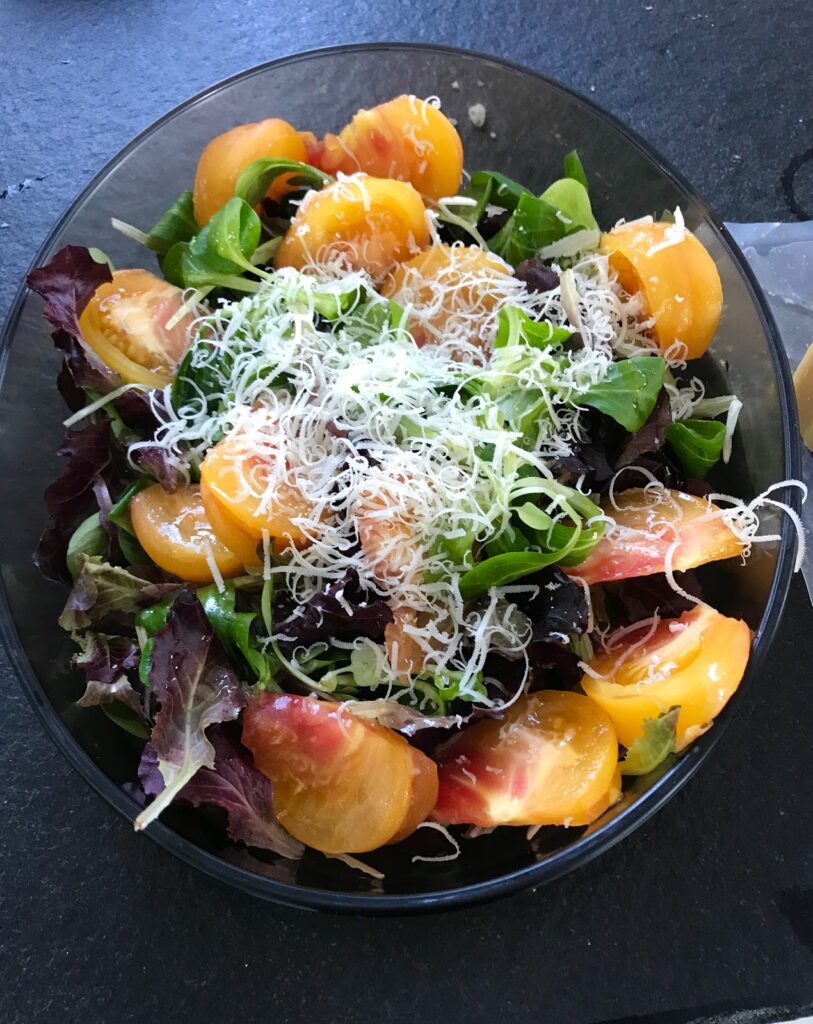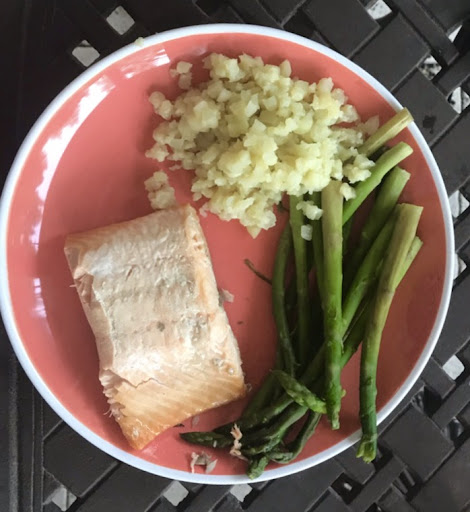
Is managing carbohydrate something you think about? Carbohydrate gets a lot of attention when it comes to managing diabetes because it is most directly responsible for the rise in blood glucose after eating. (It’s also the body’s preferred fuel. The other two sources are protein and fat).
Having diabetes does NOT mean totally avoiding carbohydrate foods, though many find blood glucose easier to manage and keep in range when eating less carbohydrate. In fact, in our July 10 blog post you’ll find the highlights from the new consensus report on nutrition therapy for adults with diabetes or prediabetes. The report confirms that reducing carbohydrate through a low or very low carbohydrate eating pattern has demonstrated glucose lowering power, and can reduce the need for glucose lowering medication! Low and very low carbohydrate eating are among the most studied eating patterns for type 2 diabetes.
What exactly is a low carbohydrate or very low carbohydrate eating pattern?
Well, there doesn’t seem to be a consistent definition. Generally, “low carbohydrate” means 26-45% of calories come from carbohydrate. And “very low carbohydrate” is less than 26% of calories coming from carbohydrate, or around 20-50 grams of non-fiber carbohydrate over the day. Don’t get caught up in the math. Just know that for many, this generally translates into eating less carbohydrate.
Here is a low-carb meal we enjoyed on our recent trip to France. Crisp fresh salad greens, juicy yellow tomatoes (nope they’re not peaches), topped with fresh grated Parmesan cheese, olive oil and balsamic vinegar. Easy and delicious!

Low- and very low-carbohydrate eating means focusing on the following:
- Non-starchy vegetables that are low in carbohydrate (think broccoli, tomatoes, carrots, and salad greens).
- Foods higher in protein (like meat, chicken, turkey, fish, seafood, nuts, and seeds)
- Healthy fats (like olive oil and avocado)
Fruit and higher-carbohydrate vegetables can be worked in; however, added sugar-containing foods and grain products are often very limited or altogether avoided.
How do you portion your plate?
So if you think about how you might actually fill your plate to embrace lower-carbohydrate eating, aim for at least half of the plate filled with the vegetables that are not starchy. About one-fourth of your plate would be lean meat or other proteins. And the remaining one-fourth of the plate portioned with carbohydrate foods…dairy, fruit, or maybe a small portion of a starchy vegetable or beans. For very low carb eating, actually the majority of the plate may be filled with non-starchy vegetables and lean protein.


Individualization is important
The consensus report acknowledges that there’s no one size fits all carbohydrate goals for those with diabetes. Figuring out how much carbohydrate and which carbohydrate foods to eat are important every day decisions.
Monitoring what and how much carbohydrate is eaten (or drunk) and noting the blood glucose response are key to keep blood glucose in range after eating. While we are fans of using a continuous glucose monitor (CGM), a blood glucose meter can do the work as well. Check blood glucose 1 ½ -2 hours after eating. If blood glucose is above target, reducing carbohydrate at the next meal may help bring blood glucose into range. We encourage trying it and noting the impact. Taking a solution focused approach – if it works, do more of that.
If you are managing carbohydrate choices and blood glucose is still out of range after eating, a diabetes medication may need to be added, or a dose or timing tweak made with guidance from your healthcare team.
Small swaps can reduce carbohydrate in a big way
We’re all about being practical and keeping it real. If you’ve followed our blog for awhile, you may remember the swap Deb shared in our blog Making New Years Solutions which helped her swap a tall Starbucks Latte instead of a grande Mocha, a habit she still follows.
So if you are trying to make some swaps to reduce carbohydrate, here are 7 small swaps to get you started. Make them all, and you’ve reduced your carbohydrate by over 100 grams!
7 swaps to reduce carbohydrate
- Swap in unsweetened almond milk instead of dairy milk. Save 10-11 grams carbohydrate per cup.
- Swap in plain Greek yogurt for plain traditional yogurt. Save 6 grams carbohydrate per 6 oz container.
- Swap in cooked spaghetti squash or zucchini spirals for spaghetti noodles. Save 35 grams of carbohydrate per cup.
- Swap in quinoa for rice. Save 7 grams carbohydrate for each cooked ½ cup serving.
- Swap in tomato or vegetable juice for fruit juice at breakfast. Save 8 grams for every 4 ounces.
- Swap in nuts for pretzels. Save 17 grams carbohydrate for each ounce.
- Swap in water or tea sweetened with a low calorie sweetener for a 16-ounce sweet tea. Save 20 grams carbohydrate.
Making it a low carbohydrate day
We’ve found that seeing how all of this could come together in the form of an actual meal is helpful. Here are some ideas to spark your thinking on what might work for you:
Begin with breakfast. Veggie omelet or scramble with low fat cheese and topped with diced avocado; fresh blackberries and raspberries with a dollop of Greek yogurt
Leverage veggies at lunch. Green salad w/ tuna or salmon (foil pack for ease), sliced almonds, vinaigrette dressing
Swap spiralized veggies for spaghetti at supper. Turkey meatballs and marinara over zucchini spirals or sauteed kale sprinkled with parmesan cheese; chopped romaine with light Caesar salad dressing;
Seeks some satisfying snacks. string cheese; peanuts; cucumber slices with salsa for dipping
What low carbohydrate foods are you already eating? How can you swap those in more often? What is do-able for you?
Subscribe to our blog and we’ll email you when a new post is published!
Follow us on Twitter and Instagram @AFreshPOVforYou.
Disclaimer: A Fresh POV for You is a participant in the Amazon Services LLC Associates Program, an affiliate advertising program designed to provide a means for sites to earn advertising fees by advertising and linking to amazon.com.
